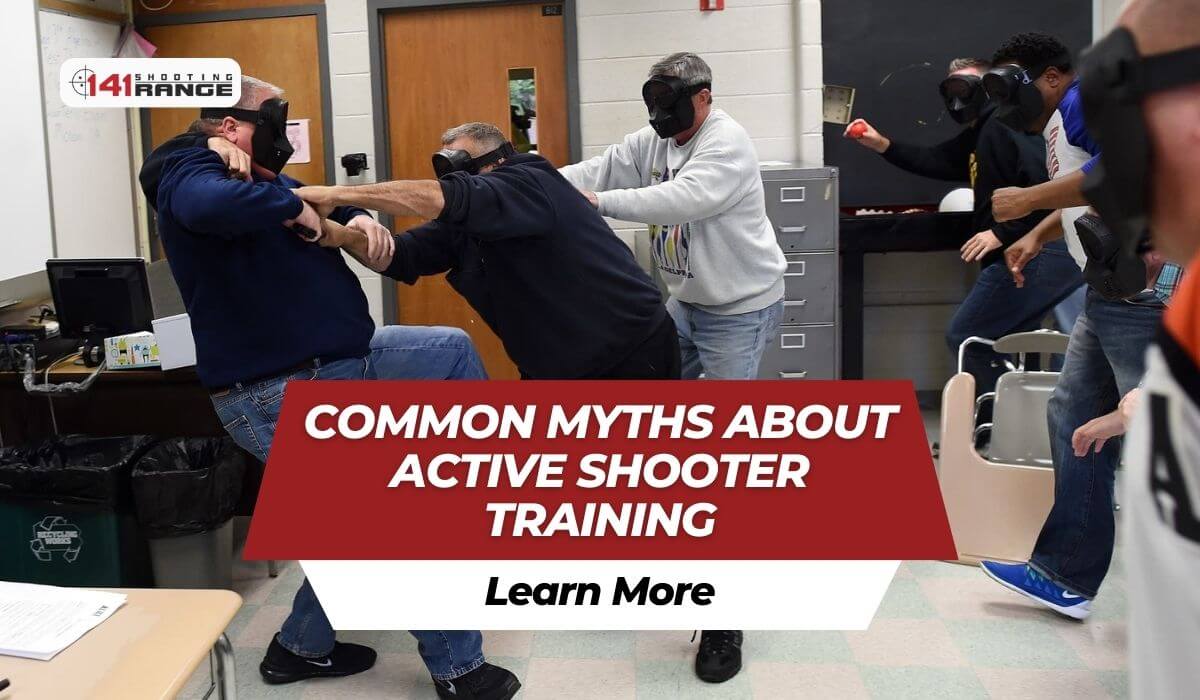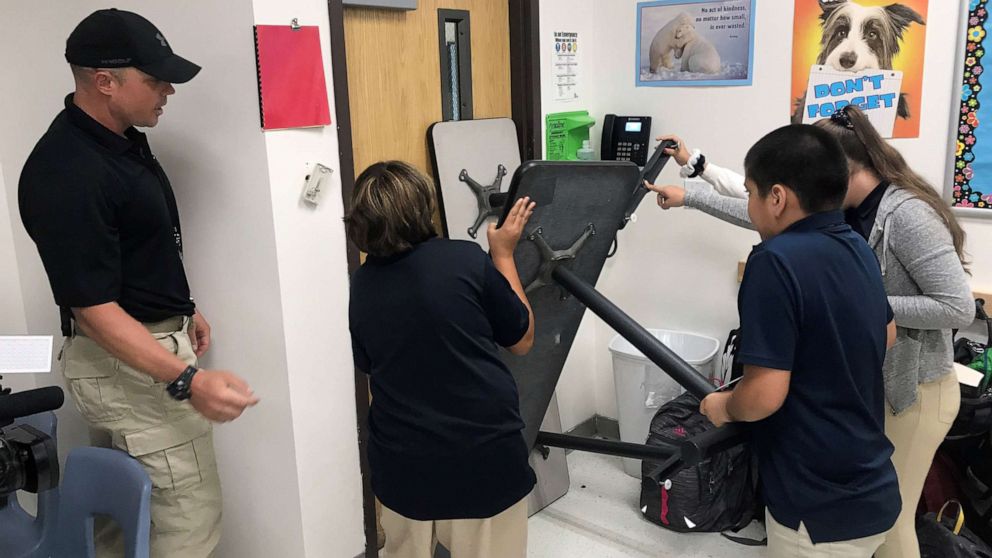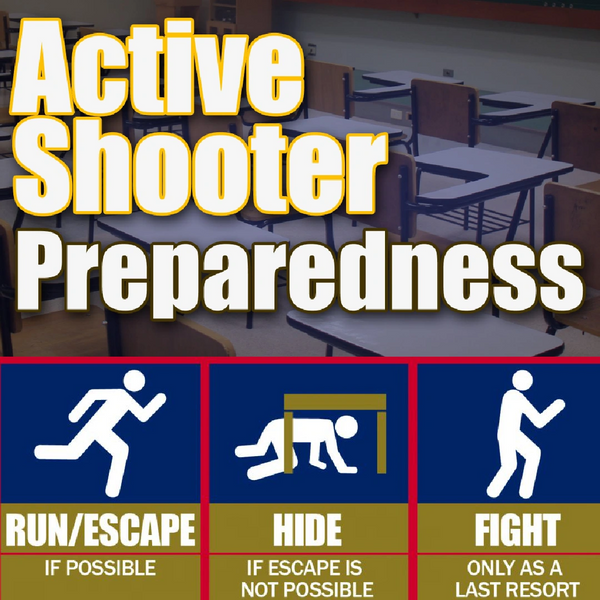Comprehensive Active Shooter Training Programs for Schools and Workplaces
Comprehensive Active Shooter Training Programs for Schools and Workplaces
Blog Article
Implementing Energetic Shooter Training: Finest Practices for Producing a Safe and Prepared Neighborhood Environment
As neighborhoods challenge the unsettling fact of energetic shooter events, the implementation of comprehensive training programs becomes imperative. An effective approach pivots on not only the advancement of customized educational programs that resolve regional threats yet additionally the participation of diverse stakeholders. By using a selection of training methods, communities can guarantee that all members are equipped with necessary abilities. The obstacle lies in preserving an adaptive framework that develops with emerging risks. What are the critical components that can change a standard training program into a durable design for community durability?

Recognizing the Requirement for Training
In an age noted by enhancing events of physical violence in public areas, understanding the requirement for energetic shooter training has actually never ever been much more essential. Extensive training efforts can outfit individuals with the knowledge and abilities to react decisively.
Training promotes a sense of empowerment and preparedness, allowing people to feel even more safe and secure in their environments. The advantages of active shooter training expand past prompt feedback; they include boosting interaction protocols and boosting general safety and security procedures within organizations.
Key Components of Effective Programs
Reliable energetic shooter training programs incorporate numerous essential components that boost readiness and response capabilities. Extensive curriculum development is vital, ensuring that training material is appropriate, evidence-based, and customized to the specific requirements of the organization or neighborhood. This consists of understanding the dynamics of active shooter occurrences and the mental effect on individuals included.
Second, sensible training circumstances need to be employed to replicate potential circumstances, permitting participants to practice decision-making and action approaches in a controlled atmosphere. These drills facilitate muscular tissue memory and construct confidence among individuals.
Third, a focus on communication protocols is critical. Establishing clear lines of interaction amongst law enforcement, emergency -responders, and participants makes sure worked with responses during a case. Routine updates and correspondence course help keep interaction pathways clear and reliable.
Fourth, recurring evaluation and responses systems need to be incorporated into the training program - active shooter training. Evaluating the efficiency of training via participant comments and performance metrics permits constant enhancement
Last but not least, fostering a culture of security and preparedness within the neighborhood motivates caution and aggressive measures, guaranteeing that individuals are not only trained yet also participated in keeping a secure atmosphere.
Engaging Neighborhood Stakeholders

To effectively engage these stakeholders, it is necessary to communicate the purposes and benefits of the training. Organizing educational sessions can aid clear up the training's function, address worries, and outline the roles each stakeholder might play. Producing a stakeholder advisory committee can promote ongoing dialogue, permitting for diverse viewpoints and understandings to be integrated right into the training program.
Building relationships with neighborhood leaders and companies is also critical. Their support can boost outreach efforts, boost participation, and guarantee that training is customized to the unique requirements of the area. Furthermore, stakeholders can aid in disseminating info and sources, enhancing the message of security and readiness.
Ultimately, engaging neighborhood stakeholders not just reinforces the training initiative however additionally grows a sense of Check This Out possession amongst residents, resulting in a much more resistant and enlightened area capable of reacting efficiently to prospective dangers.
Educating Distribution Methods
Using a variety of training delivery approaches is vital to suit the varied learning styles and needs of participants in energetic shooter training programs (active shooter training). Reliable training can take several types, including talks, hands-on simulations, on the internet components, and interactive workshops. Each technique serves a special purpose and can enhance the total discovering experience

On the internet components provide adaptability and ease of access, enabling individuals to learn at their own rate. These can include video clips, tests, and conversations to determine understanding. Interactive workshops motivate seminar and analytic, advertising synergy and communication skills.
Including a blended method that incorporates these methods not only enhances the training experience yet also makes sure that individuals are better prepared to respond effectively in the event of an active shooter scenario (active shooter training). By addressing different discovering choices, companies can create a much more educated and receptive community
Continuous Examination and Renovation
Normal assessment and enhancement of energetic shooter training programs are important to preserving their significance and performance. As hazards advance, so must the strategies and methodologies employed in training. Continuous evaluation guarantees that training material shows the most recent knowledge on energetic shooter occurrences, integrating lessons gained from current occasions and changing for emerging trends.
To facilitate this procedure, organizations ought to establish feedback devices that consist of participant examinations, specialist testimonials, and occurrence debriefs. Gathering data on individual efficiency throughout drills and workouts is necessary, as it highlights locations requiring improvement and informs future training sessions. In addition, involving with police and emergency -responders can give useful insights right into the usefulness and applicability of training procedures.
On a regular basis set up testimonials of training materials and techniques need to be mandated, promoting an environment of technology and adaptability. Organizations has to likewise encourage a society continue reading this of ongoing understanding, where employee really feel encouraged to suggest adjustments based on their experiences. By devoting to continual assessment and renovation, organizations not just boost the efficiency of their active shooter training my website programs but likewise reinforce their general dedication to safety and preparedness within the area.
Conclusion
Finally, effective application of energetic shooter training requires a comprehensive strategy that prioritizes neighborhood involvement and sensible simulations. By developing tailored curricula, including varied training methods, and promoting cooperation among stakeholders, communities can improve readiness. Continuous examination and responses mechanisms are crucial for adapting programs to emerging hazards, thereby enhancing total safety. Ultimately, a dedication to recurring training and renovation grows a society of alertness and readiness, making sure a more secure setting for all community members.
Report this page